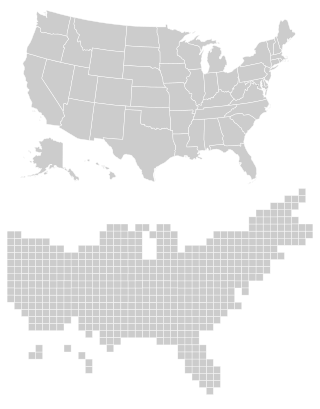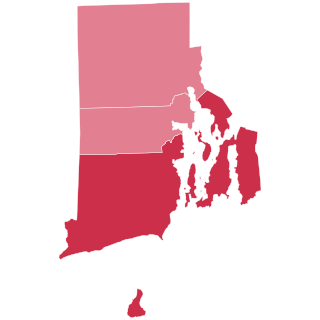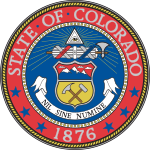
The 1876 United States presidential election was the 23rd quadrennial presidential election, held on Tuesday, November 7, 1876, in which Republican nominee Rutherford B. Hayes faced Democrat Samuel J. Tilden. It was one of the most contentious presidential elections in American history. Its resolution involved negotiations between the Republicans and Democrats, resulting in the Compromise of 1877, and on March 2, 1877, the counting of electoral votes by the House and Senate occurred, confirming Hayes as President. It was the second of five U.S. presidential elections in which the winner did not win a plurality of the national popular vote.

The 1788–89 United States presidential election was the first quadrennial presidential election. It was held from Monday, December 15, 1788, to Saturday, January 10, 1789, under the new Constitution ratified that same year. George Washington was unanimously elected for the first of his two terms as president and John Adams became the first vice president. This was the only U.S. presidential election that spanned two calendar years without a contingent election and the first national presidential election in American history.

The 1792 United States presidential election was the second quadrennial presidential election. It was held from Friday, November 2, to Wednesday, December 5, 1792. Incumbent President George Washington was elected to a second term by a unanimous vote in the electoral college, while John Adams was re-elected as vice president. Washington was essentially unopposed, but Adams faced a competitive re-election against Governor George Clinton of New York.

In the United States, the Electoral College is the group of presidential electors required by the Constitution to form every 4 years for the sole purpose of appointing the president and vice president. Each state appoints electors under the methods described by its legislature, equal in number to its congressional delegation. The federal District of Columbia also has 3 electors under an amendment adopted in 1961. Federal office holders, including senators and representatives, cannot be electors. Of the current 538 electors, an absolute majority of 270 or more electoral votes is required to elect the president and vice president. If no candidate achieves a majority there, a contingent election is held by the House of Representatives to elect the president and by the Senate to elect the vice president.

The 2004 United States presidential election in Ohio took place on November 2, 2004, and was part of the 2004 United States presidential election. Voters chose 20 representatives, or electors to the Electoral College, who voted for president and vice president.

In the United States Electoral College, a faithless elector is an elector who does not vote for the candidates for U.S. President and U.S. Vice President for whom the elector had pledged to vote, and instead votes for another person for one or both offices or abstains from voting. As part of United States presidential elections, each state selects the method by which its electors are to be selected, which in modern times has been based on a popular vote in most states, and generally requires its electors to have pledged to vote for the candidates of their party if appointed. A pledged elector is only considered a faithless elector by breaking their pledge; unpledged electors have no pledge to break. The consequences of an elector voting in a way inconsistent with their pledge vary from state to state.

The Electoral Commission, sometimes referred to as the Hayes-Tilden or Tilden-Hayes Electoral Commission, was a temporary body created by the United States Congress on January 29, 1877, to resolve the disputed United States presidential election of 1876. Democrat Samuel J. Tilden and Republican Rutherford B. Hayes were the main contenders in the election. Tilden won 184 undisputed electoral votes, one vote shy of the 185 needed to win, to Hayes' 165, with 20 electoral votes from four states unresolved. Both Tilden and Hayes electors submitted votes from these states, and each claimed victory.

The National Popular Vote Interstate Compact (NPVIC) is an agreement among a group of U.S. states and the District of Columbia to award all their electoral votes to whichever presidential ticket wins the overall popular vote in the 50 states and the District of Columbia. The compact is designed to ensure that the candidate who receives the most votes nationwide is elected president, and it would come into effect only when it would guarantee that outcome. Introduced in 2006, as of August 2023 it has been adopted by sixteen states and the District of Columbia. These jurisdictions have 205 electoral votes, which is 38% of the Electoral College and 76% of the 270 votes needed to give the compact legal force.

The 1876 United States presidential election in California was held on November 7, 1876, as part of the 1876 United States presidential election. State voters chose six representatives, or electors, to the Electoral College, who voted for president and vice president.

The election of the president and the vice president of the United States is an indirect election in which citizens of the United States who are registered to vote in one of the fifty U.S. states or in Washington, D.C., cast ballots not directly for those offices, but instead for members of the Electoral College. These electors then cast direct votes, known as electoral votes, for president, and for vice president. The candidate who receives an absolute majority of electoral votes is then elected to that office. If no candidate receives an absolute majority of the votes for president, the House of Representatives elects the president; likewise if no one receives an absolute majority of the votes for vice president, then the Senate elects the vice president.

The 1876 United States elections were held on November 7. In one of the most disputed presidential elections in American history, Republican Governor Rutherford B. Hayes of Ohio ended up winning despite Democratic Governor Samuel J. Tilden of New York earning a majority of the popular vote. The Republicans maintained their Senate majority and cut into the Democratic majority in the House.

Following is a table of United States presidential elections in Colorado, ordered by year. Since its admission to statehood in 1876, Colorado has participated in every U.S. presidential election.

In the 2016 United States presidential election, ten members of the Electoral College voted or attempted to vote for a candidate different from the ones to whom they were pledged. Three of these votes were invalidated under the faithless elector laws of their respective states, and the elector either subsequently voted for the pledged candidate or was replaced by someone who did. Although there had been a combined total of 155 instances of individual electors voting faithlessly prior to 2016 in over two centuries of previous US presidential elections, 2016 was the first election in over a hundred years in which multiple electors worked to alter the result of the election.

The 1848 United States presidential election in Massachusetts took place on November 7, 1848, as part of the 1848 United States presidential election. Voters chose 12 representatives, or electors to the Electoral College, who voted for President and Vice President.

The 1876 United States presidential election in Rhode Island took place on November 7, 1876, as part of the 1876 United States presidential election. Voters chose four representatives, or electors to the Electoral College, who voted for president and vice president.

The 1860 United States presidential election in South Carolina took place on November 6, 1860, as part of this 1860 United States presidential election. The state legislature chose 8 representatives, or electors to the Electoral College, who voted for president and vice president. By 1860, South Carolina was the only state using this procedure in a presidential election. As of 2020, this remains the last election in which a state legislature elected a state’s electors.

The 1876 United States presidential election in Ohio was held on November 7, 1876 as part of the 1876 United States presidential election. State voters chose 22 electors to the Electoral College, who voted for president and vice president.

The 1868 United States presidential election in Florida took place on November 3, 1868, as part of the 1868 United States presidential election. The state legislature chose three representatives, or electors to the Electoral College, who voted for president and vice president. The vote in the legislature was 40 Republicans to 9 Democrats.
Chiafalo v. Washington, 591 U.S. ___ (2020), was a United States Supreme Court case on the issue of "faithless electors" in the Electoral College stemming from the 2016 United States presidential election. The Court ruled unanimously, by a vote of 8–0, that states have the ability to enforce an elector's pledge in presidential elections. Chiafalo deals with electors who received US$1,000 fines for not voting for the nominees of their party in the state of Washington. The case was originally consolidated with Colorado Department of State v. Baca, 591 U.S. ___ (2020), a similar case based on a challenge to a Colorado law providing for the removal and replacement of an elector who does not vote for the presidential candidate who received the most votes in the state, with the electors claiming they have discretion to vote as they choose under the Twelfth Amendment to the United States Constitution. On March 10, 2020, Justice Sonia Sotomayor recused herself in the Colorado case due to a prior relationship to a respondent, and the cases were decided separately on July 6, 2020. Baca was a per curiam decision that followed from the unanimous ruling in Chiafalo against the faithless electors and in favor of the state.




















